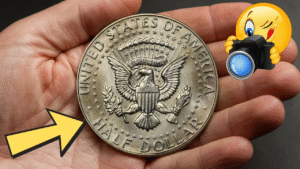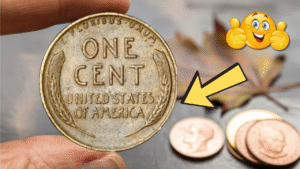The world of coin collecting is filled with hidden treasures, and one coin continues to captivate collectors and casual enthusiasts alike: the Lincoln Wheat Penny. While most of these pennies are worth little more than face value, a rare version of the 1943 Lincoln Wheat Penny could be worth an astonishing $3,172,500—and experts believe some may still be out there in circulation today.
Let’s explore what makes this penny so valuable, how to identify it, and why you might want to check your spare change a little more carefully.
The History Behind the Lincoln Wheat Penny
The Lincoln Wheat Penny was first minted in 1909 to commemorate the 100th anniversary of Abraham Lincoln’s birth. Designed by Victor David Brenner, it marked the first time a U.S. coin featured a real person’s portrait instead of the traditional Lady Liberty. On the reverse side, two stylized wheat stalks frame the denomination, giving the coin its nickname.
The Wheat Penny was produced until 1958, after which it was replaced by the Lincoln Memorial design. Millions of these pennies were minted over the decades, but certain rare versions, like the 1943 copper penny, have become legends in the numismatic world.
Why the 1943 Copper Wheat Penny is So Rare
During World War II, copper was in high demand for military use. In 1943, the U.S. Mint switched from copper to zinc-coated steel for penny production to conserve copper supplies. However, a small number of copper planchets (coin blanks) were mistakenly left in the machines and struck with the 1943 date.
It’s estimated that only about 20 of these copper pennies exist. Their extreme rarity and historical backstory have made them one of the most coveted U.S. coins ever produced. One of these coins sold at auction for an incredible $3,172,500—proving that even a penny can be worth millions under the right circumstances.
Here’s a quick comparison between the standard and rare 1943 pennies:
| Feature | 1943 Steel Penny | 1943 Copper Penny |
|---|---|---|
| Material | Zinc-coated steel | Copper |
| Color | Silvery-gray | Reddish-brown |
| Magnetic? | Yes | No |
| Weight | 2.70 grams | 3.11 grams |
| Estimated Value | $0.10 – $1.00 | Up to $3,172,500 |
How to Identify a 1943 Copper Penny
If you come across a 1943 penny, it’s easy to perform a basic check to see if it could be one of the rare copper versions:
- Test with a magnet: Steel pennies will stick to a magnet, but copper pennies will not.
- Check the weight: A copper penny weighs around 3.11 grams, while the steel version weighs about 2.70 grams.
- Look at the color: Copper pennies have a reddish tone, while steel pennies appear silvery.
If your penny passes these initial checks, it’s crucial to have it authenticated by a reputable coin grading service. Authentication protects you from counterfeit coins and ensures you know the true value of your find.
Could the $3 Million Penny Still Be in Circulation?
Many experts believe that a few of these rare 1943 copper pennies may still be tucked away in jars, piggy banks, or old collections. Since millions of pennies were minted that year, it’s entirely possible that an unnoticed copper version remains hidden among ordinary coins.
For collectors and curious individuals alike, the possibility of finding such a valuable coin adds excitement to everyday transactions. Every handful of change could hold a tiny piece of history—and potentially a life-changing discovery.
The Joy of Coin Collecting
Beyond the thrill of finding a valuable penny, coin collecting offers a rewarding hobby that connects people with history, art, and culture. Whether you’re searching for rare coins or simply appreciating the craftsmanship of everyday currency, each coin tells a story.
Even if you don’t uncover a $3 million penny, the journey itself can be just as valuable.
Next time you get change, take a closer look. That ordinary penny might just be your ticket to an extraordinary discovery.
FAQs
How many 1943 copper Wheat Pennies exist?
Only about 20 authentic 1943 copper Lincoln Wheat Pennies are known to exist.
Why were 1943 pennies made of steel?
Due to copper shortages during World War II, the U.S. Mint switched to zinc-coated steel for penny production in 1943.
How can I tell if I have a 1943 copper penny?
Check if it sticks to a magnet (it shouldn’t), verify the reddish color, and weigh it (should be around 3.11 grams).
Can I sell a 1943 copper penny without authentication?
It’s highly recommended to get professional authentication to confirm its legitimacy and maximize its value at sale.
What’s the highest price a 1943 copper penny has sold for?
One sold at auction for $3,172,500, making it one of the most valuable U.S. coins ever sold.









